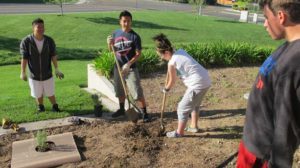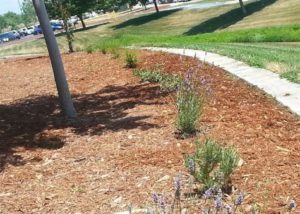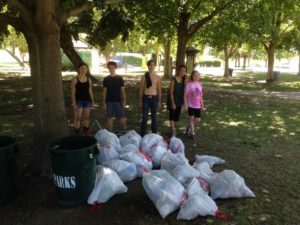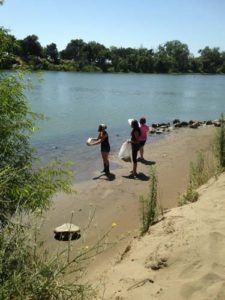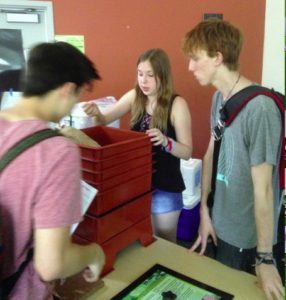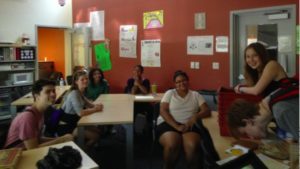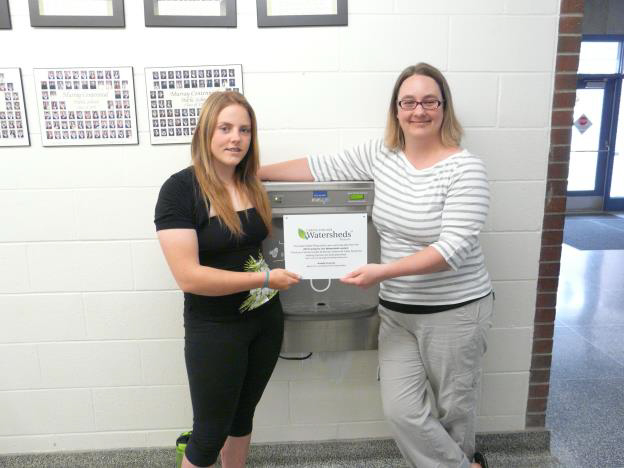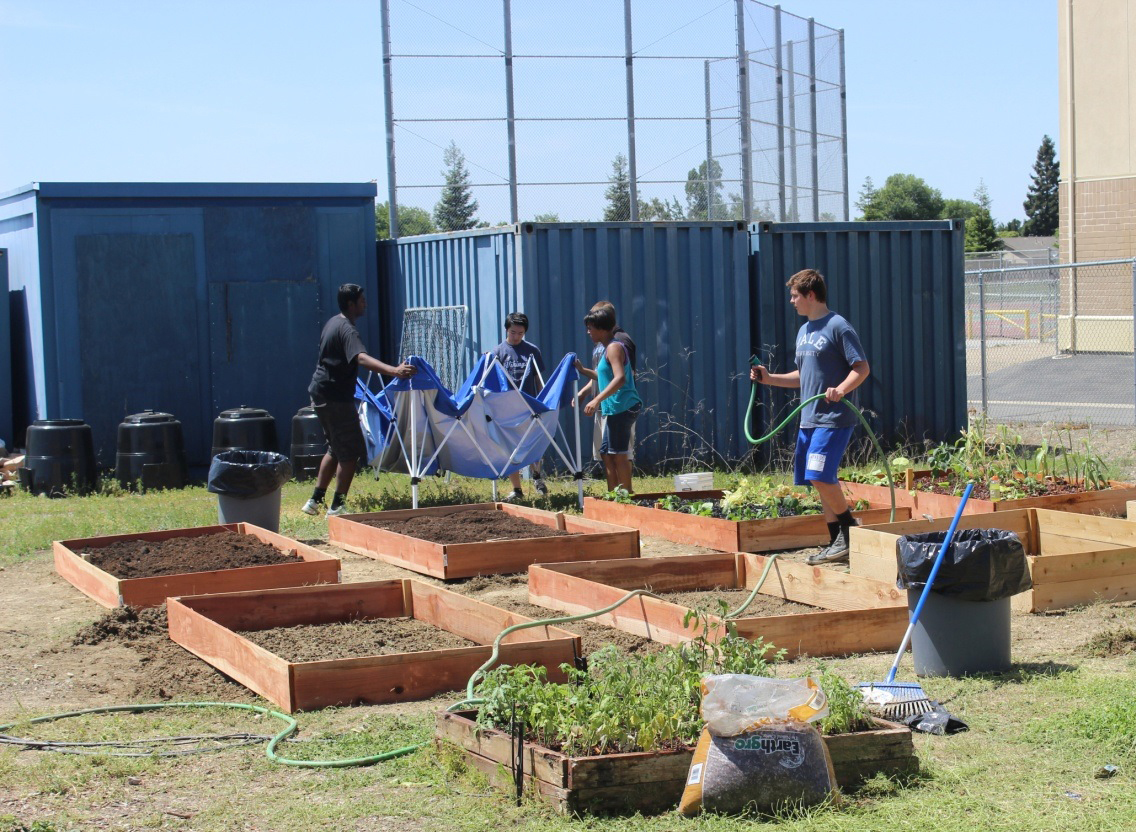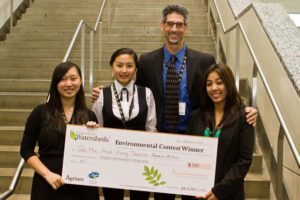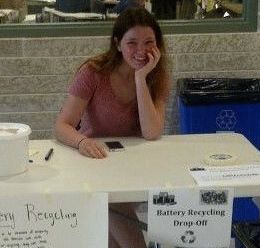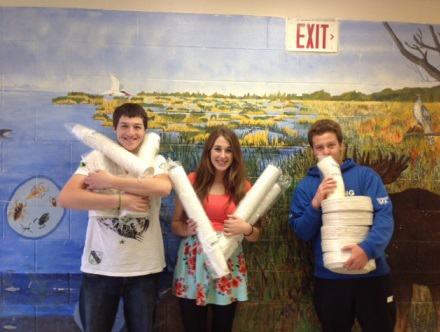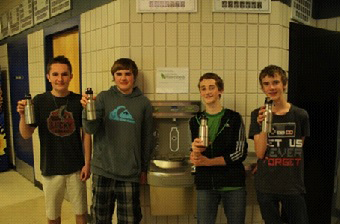2014 Antelope, California, USA
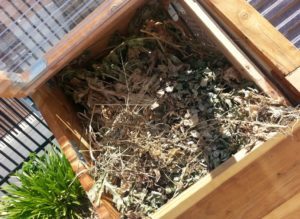
Antelope High School student Chelsea Morgan wanted to make use of the large amount of green waste produced by the school garden. In the old system, students were throwing away this green waste directly into the trash dumpster. She was concerned that the green waste in the landfill was a wasted resource and would only add to the production of excess methane. She wrote a proposal to build a compost bin for the waste, and students in the People for the Planet club helped to implement her project. When green waste in composted, it produces a very important, nutrient-rich soil additive for the garden.
The students built a wooden 3-bin compost system conveniently located adjacent to the school garden. Once the original green waste has been in the first bin for a few months, students will transfer it to the next bin for further decomposition, which will also open up space for the new green waste.
In addition to providing fertilizer for the garden and reducing the amount of waste being sent to the landfill, the compost system will be used as an educational tool for all of the Biology and Environmental Science classes at Antelope High.
